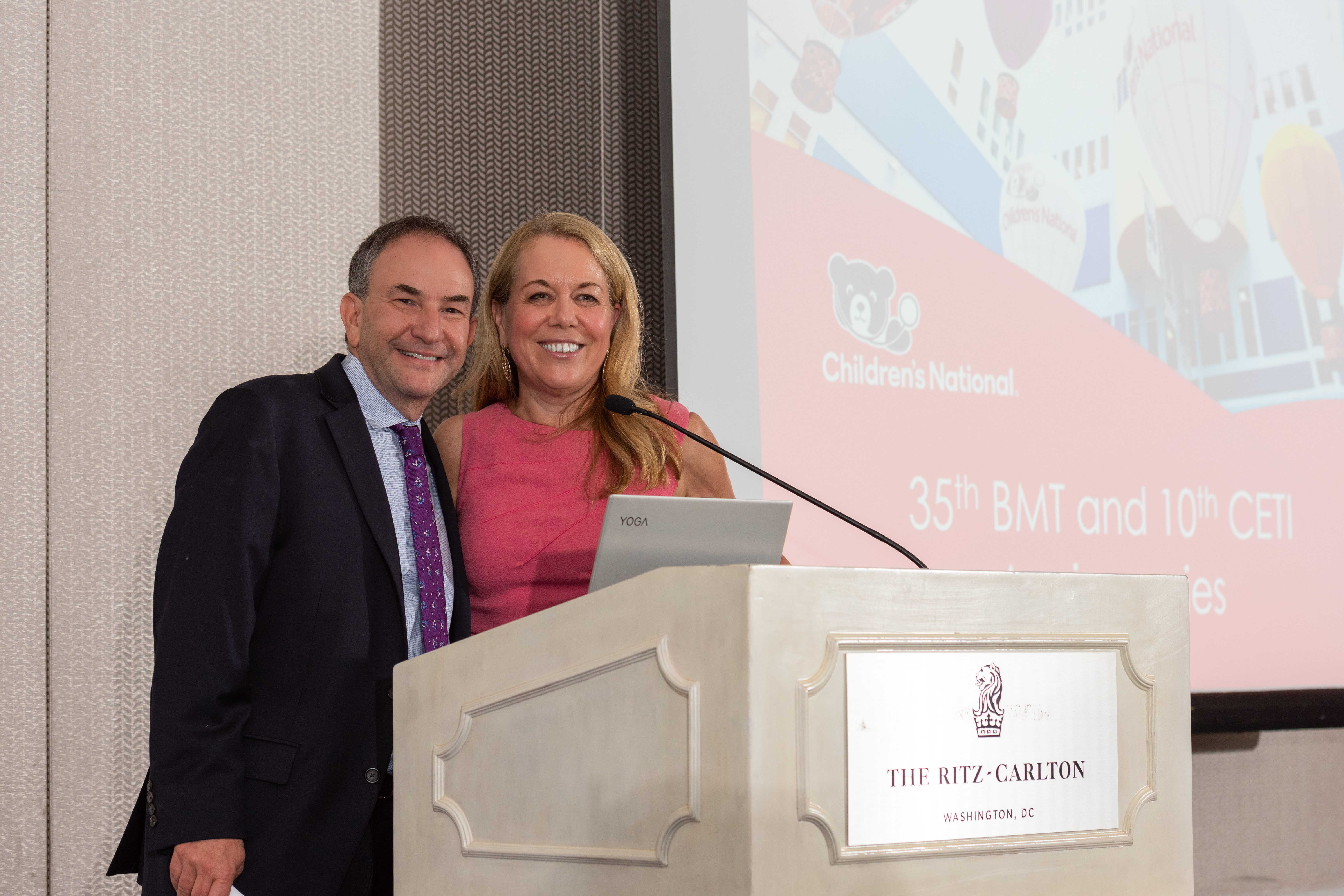CHILDREN'S NATIONAL RESEARCH INSTITUTE ACADEMIC ANNUAL REPORT 2023
'Beacon-of-hope.jpg'CGMR HIGHLIGHT
A beacon of hope in genetic medicine
The Center for Genetic Medicine Research (C.G.M.R.) is a pioneering institution that has made significant strides in genetic medicine. With a highly interdisciplinary faculty, the center focuses on common health problems in Washington, D.C., and serves as an international referral site for rare disorders. The center aims to transform children’s health through genome-enabled research, pre-clinical studies of experimental therapeutics and clinical trials.
In the 2022-2023 academic year, the C.G.M.R. has established itself as an interdisciplinary and collaborative institution, making huge strides in areas ranging from disease mechanisms to breakthroughs in new treatments.
Training the next generation of scientists
The C.G.M.R. is committed to nurturing the next generation of scientists and clinical investigators. The Rare Disease Clinical Research Training Program, led by Deb Regier, M.D., Ph.D., and Mark Batshaw, M.D., aims to prepare a diverse group of early-career researchers to perform clinical and translational research in genetic and non-genetic rare disorders. This program is crucial as the number of rare disorders grows each year, necessitating new treatments, approaches and understanding.
Understanding disease mechanisms
The C.G.M.R. is at the forefront of understanding disease mechanisms. For instance, Clare Charpentier, a Ph.D. student and member of the Zohn Laboratory, and her mentor Irene Zohn, Ph.D., are working on a project to elucidate the molecular mechanisms that drive neural tube closure. Disruption of these mechanisms can lead to spina bifida, a severe birth defect.
Matthew Bramble, Ph.D., investigates genetic and environmental risk factors for developing konzo, a debilitating neurological disease that affects hunger-stricken populations in sub-Saharan Africa. Wei Li, Ph.D., another researcher at the center, is using machine learning and functional genomics approaches to interpret variants associated with the risk of coronary artery disease. This will allow the development of innovative disease models and analysis tools for a better understanding of disease mechanisms. Meanwhile, Ljubica Caldovic, Ph.D., and Nicholas Ah Mew, M.D., are working on improving tic changes in urea cycle genes as either disease-causing or benign, to benefit patients, treating physicians and diagnostic laboratories.
Muscular dystrophy and skeletal muscle mechanisms are also part of the important work being done by the center to understand disease mechanisms. Yi-Wen Chen, Ph.D., M.S., D.V.M., focuses on understanding dynamic changes in muscle protein abundance. Marshall Hogarth, Ph.D., has been identifying mechanisms which cause the replacement of muscles with fatty tissue after injury. This will have major implications for muscular dystrophy and other degenerative diseases where fatty replacement of muscle tissue leads to progressive and debilitating muscle weakness.
Identifying drug targets and developing new treatments
The C.G.M.R. is also making significant strides in identifying drug targets and developing new treatments. The work of Wei Li, Ph.D., on the mechanism of action of CYLD and YPEL5 genes as novel drug targets for HIV-1 latency reversal is paving the way to develop novel drugs targeting products of the two genes. Andrew Dauber, M.D., M.M.Sc., is similarly helping understand Collagen X as a biomarker of growth velocity in children being initiated on growth hormone therapy.
Ioannis Koutroulis, M.D., Ph.D., M.B.A., has been developing and validating a biomarker-enhanced AI-based screening tool for sepsis that can enhance early recognition of the disease in children and enable initiation of timely, aggressive personalized sepsis therapy.
Andrea Gropman, M.D., and Anne Chiaramello, Ph.D., are working on emerging therapeutic candidates for rare maternally inherited mitochondrial diseases with shared etiologies. Their clinical trial focuses on a new pharmacological strategy targeting epigenomics and mitochondrial metabolism. The C.G.M.R. is also building programs and consortia to treat rare childhood brain tumors. Javad Nazarian, Ph.D., M.Sc., is leading a project to establish a consortium that will assess the efficacy of focused ultrasound for treating children diagnosed with diffuse midline glioma and diffuse intrinsic pontine glioma.
Preparing for public health emergencies
In addition to its research endeavors, the C.G.M.R. is also preparing children’s hospitals and their communities to care for children during disasters and public health emergencies. Dr. Batshaw and Joelle Simpson, M.D., are leading a project to establish a network with four children’s hospitals located in geographically diverse areas of the country. This network and its pediatric experts will support the nation to better care for the unique needs of children in emergencies. This work will enhance our health care system to:
- Strengthen partnerships in their communities and in existing emergency preparedness systems.
- Improve and expand pediatric readiness of the emergency care system, inpatient settings and out-of-hospital care settings.
- Adopt best practices, policies and research-informed pediatric care.
A leading institution in genetic medicine, the C.G.M.R. is making significant strides in training the next generation of scientists, understanding disease mechanisms, identifying drug targets, developing new treatments and preparing for public health emergencies. Its work is transforming children’s health and paving the way for pediatric breakthroughs in genetic medicine, making it a beacon of hope.

